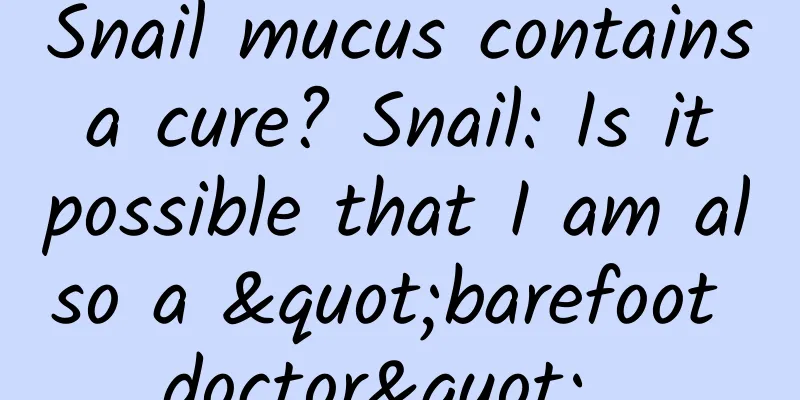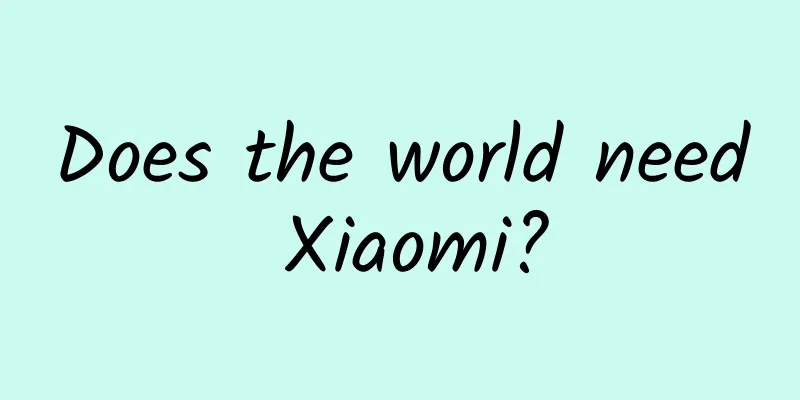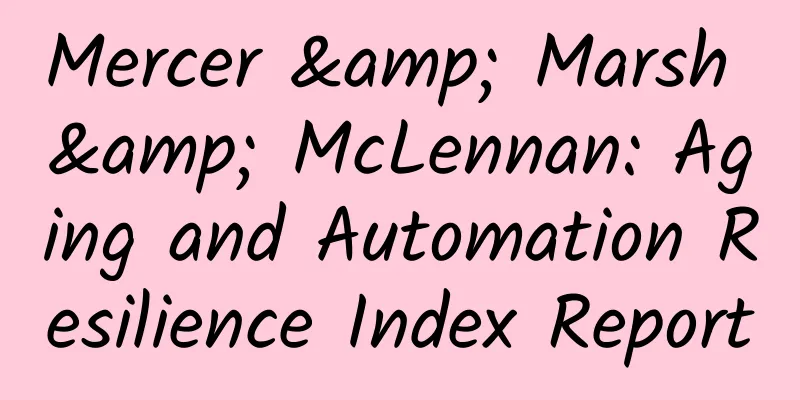Snail mucus contains a cure? Snail: Is it possible that I am also a "barefoot doctor"...

|
Produced by: Science Popularization China Author: Lin Lisha, Deng Tuo (Kunming Institute of Botany, Chinese Academy of Sciences) Producer: China Science Expo You may have had wounds of varying sizes in the bumps and bruises of life. You may have also seen snails crawling on rocks or branches and the crawling traces they left behind. But what you may not have thought of is that these two seemingly unrelated things are closely related in the eyes of scientists. The traces left by the snail are the mucus it secretes, and this mucus actually contains a good remedy for wound repair. Diabetic foot ulcers, wounds that are difficult to heal Most people think of injuries as being cut by a fruit knife, which heals in a few days. But in fact, hundreds of millions of people suffer from accidental injuries, surgical injuries, etc. every year, and the wound healing cycle is long, which brings many inconveniences to the patients' lives. The skin is the largest organ in the human body and the first line of defense against pathogen invasion, so maintaining its integrity is essential for life. Normally, wound repair in healthy individuals is a highly organized biological process that includes four stages: hemostasis, inflammation, regeneration, and remodeling. However, when the above healing processes are blocked, the wound may develop into a chronic wound that is difficult to heal. Figure 1. Schematic diagram of the normal skin damage repair process (Image source: adapted from reference 1) Diabetes is a common chronic metabolic disease in modern society, with approximately 500 million patients worldwide. Diabetic foot ulcer is one of its most common and serious complications, with an incidence rate of approximately 25%. Because these patients have peripheral vascular disease, peripheral neuropathy, immune dysfunction, and chronic inflammatory response, skin wounds are difficult to heal, and persistent non-healing of wounds may lead to amputation, seriously affecting the quality of life of patients. Unfortunately, the pathogenesis of diabetic foot is complex and there is currently a lack of effective treatment. Sew it? No, glue it. For more serious trauma and chronic wounds, clinical intervention is necessary. Doctors often use surgical sutures and staples to reconnect the tissues on both sides of the wound (wound closure), but sutures may cause pain, surgical site infection, and leave scars on the skin, and removing sutures may also cause secondary injuries. The use of tissue adhesives is another treatment option that can quickly close wounds without removing sutures; however, achieving adhesion in moist tissues is challenging. At present, common tissue adhesives used clinically include chemically synthesized cyanoacrylates (medical 508 glue) and naturally derived fibrin glue. The former has poor biocompatibility, slow degradation, and toxic side effects; the latter has poor adhesion to moist tissues. Common 502 glue (chemical composition is mainly ethyl cyanoacrylate) in daily life is widely used in industry due to its strong adhesion. In comparison, medical adhesives need to consider more factors, such as exudate absorption capacity, wet adhesion, tissue regeneration promotion activity, biodegradability, etc. How to find a bioadhesive that has all these properties? Adhesion phenomena in nature may give us some inspiration. For example, the climbing ability of ivy allows it to move freely on almost all terrains; small mussels can stick to rocks to resist the impact of huge waves; snail secretions can support their own weight so that they can crawl upside down on branches... These inconspicuous little creatures have wonderful abilities. If we can figure out the chemical composition of these adhesive tools, we can find a way to prepare similar adhesives. Figure 2. Climbing plant ivy (Image source: Reference 5) Indeed, studies have found that ivy can secrete spherical nanoparticles containing negatively charged glycoproteins, which form a permeable film that adheres to the contact surface and can form permanent adhesion on the wall; the byssus of mussels contain micron-sized channels, and the L-Dopa and lysine-rich proteins secreted into the channels mix with metal ions to form coordination bonds. After being secreted outside the body, the fluid protein solidifies into glue, forming strong adhesion on the surfaces of rocks and other attachments. Inspired by these studies, scientists have developed a variety of bio-adhesive bionic materials, which have very good application prospects in medical needs such as meningeal repair and wound hemostasis. Figure 3. Mussel and byssus structure (Image source: Figure A is from Reference 6, Figures B and C are adapted from Reference 7) Snail: I didn’t expect that I am also a “barefoot doctor” Recently, it was reported that scientists have discovered a natural adhesive from snail mucus that can be used to repair chronic wounds of diabetic foot. Hippocrates, the "Father of Medicine" in ancient Greece, recorded that snails have the functions of moisturizing, reducing redness and swelling, and reducing inflammation and pain. Inspired by this, scientists have conducted a series of analytical studies on the mucus of white jade snails, combining the phenomenon of snail adhesion with modern medicine's understanding of wound healing. Researchers collected snail mucus, sterilized it, and freeze-dried it to obtain a porous, highly adhesive natural adhesive. Its two main components, polysaccharide and protein, form a unique double-network gel system, which gives it outstanding hydrogel properties and strong adhesion to wet tissue surfaces. This biomaterial also has hemostatic properties, good biocompatibility and biodegradability, and can accelerate the healing of acute and chronic wounds. Figure 4. Schematic diagram of snail mucus-derived adhesive and its mechanism of action (Image source: adapted from reference 8) It is worth mentioning that snail mucus is rich in heparin-like glycosaminoglycans, which have similar inflammatory factor binding activity to heparin, but do not have anticoagulant activity like heparin (which may cause bleeding or hematoma and is not conducive to wound healing). In addition, this natural adhesive can effectively promote the polarization of macrophages to an anti-inflammatory phenotype. As mentioned above, due to the complex pathological mechanism of diabetic foot, its cure is a major medical difficulty. Recent studies have shown that there is an excessive and persistent inflammatory response in chronic wounds, which hinders the key step of wound healing from the inflammatory stage to the proliferation stage. Therefore, this bioadhesive that also has inflammatory regulation activity has a greater therapeutic advantage. Experiments have shown that in a diabetic rat skin wound model, the adhesive can significantly reduce inflammation in tissues, accelerate granulation tissue production, angiogenesis, collagen deposition and epidermal regeneration, thereby promoting wound regeneration and healing. This latest discovery provides reference and inspiration for the development of a new generation of medical adhesives. Conclusion Looking back at the long history of mankind, it is not difficult to find that we have always been travelers on the journey of exploring the unknown. A small snail, an inconspicuous leaf... Everything in nature is giving us inspiration and enlightenment, pushing us to keep moving forward. Editor: Sun Chenyu Note: This article is the research result of Wu Mingyi's team, a researcher at the Kunming Institute of Botany, Chinese Academy of Sciences, and was published online in Nature Communications under the title of A natural biological adhesive from snail mucus for wound repair. In addition, this natural medical adhesive for healing skin wounds has been applied for invention patent protection. References: 【1】Liang, YP et al. Functional hydrogels as wound dressing to enhance wound healing. ACS Nano 15, 12687–12722 (2021). 【2】Eming S. et al. Wound repair and regeneration: Mechanisms, signaling, and translation. Sci. Transl. Med. 6, 265sr6 (2014). 【3】Baltzis D. et al. Pathogenesis and treatment of impaired wound healing in diabetes mellitus: New insights. Adv. Ther. 31, 817–836 (2014). 【4】Bonnemain B. Helix and drugs: snails for western health care from antiquity to the present. Evid.-based Complement Altern. Med. 2, 25–28 (2005). 【5】Huang Y. et al. Nanospherical arabinogalactan proteins are a key component of the high-strength adhesive secreted by English ivy. Proc. Natl Acad. Sci. USA 113, E3193–E3202 (2016). 【6】Xu Q. et al. Metal coordination-mediated functional grading and self-healing in mussel byssus cuticle. Adv. Sci. 6, 1902043 (2019). 【7】Priemel T. et al. Microfluidic-like fabrication of a vanadium-cured bioadhesive by mussels. Science 374, 206–211 (2021). |
<<: Are humans still evolving today?
>>: Spring sleepiness is not a disease, but it is really painful when you feel sleepy.
Recommend
4 tips to help you get a good night's sleep, use them before going to bed tonight!
In the new year, while everyone is working hard, ...
In addition to LeTV, which other video websites are making mobile phones?
As a video website for mobile phones, LeTV is by ...
Plug-in hybrid vehicles are growing against the market trend and gradually becoming a "blue ocean" in the auto market
Since the release of the "Automotive Industr...
Brand marketing trends in 2020!
2019 has passed by quickly, but it has left many ...
We don’t understand the world of young people, why is “sorrow” so popular?
With the popularity of " sorrow culture &quo...
After the fall of the Ruifeng S3 legend, JAC's sales volume can no longer catch up with Zotye
The most glorious time for JAC was when the Ruife...
India's driverless subway derailed and crashed into a wall, but netizens still recommend local residents to use motorcycles to travel
Although driverless cars are developing rapidly, ...
After experiencing the growth of Bilibili from 1 to 10, I have 5 profound insights
You will find that the larger the community, the ...
mv Weimiao Business School Advanced Financial Management Course Index Fund Stock Course
I believe many friends have seen the advertisemen...
iOS 16.6 update pushed, iOS 17 will be updated next week!
Early yesterday morning, Apple pushed the iOS 16....
7 things you do every day that accelerate the breakdown of your knees (not running)
Nowadays, exercise has become a "compulsory ...
Analysis of commonly used user acquisition strategies for online and offline platforms
This article mainly discusses the analysis of use...
Game console market dilemma: Microsoft and Sony are sluggish and content is hard to break through
Although domestic policies have been relaxed, all...
A survey on the effectiveness of Toutiao CPA shows that 90% of people ignore this issue!
A friend complains every time he meets her: "...









